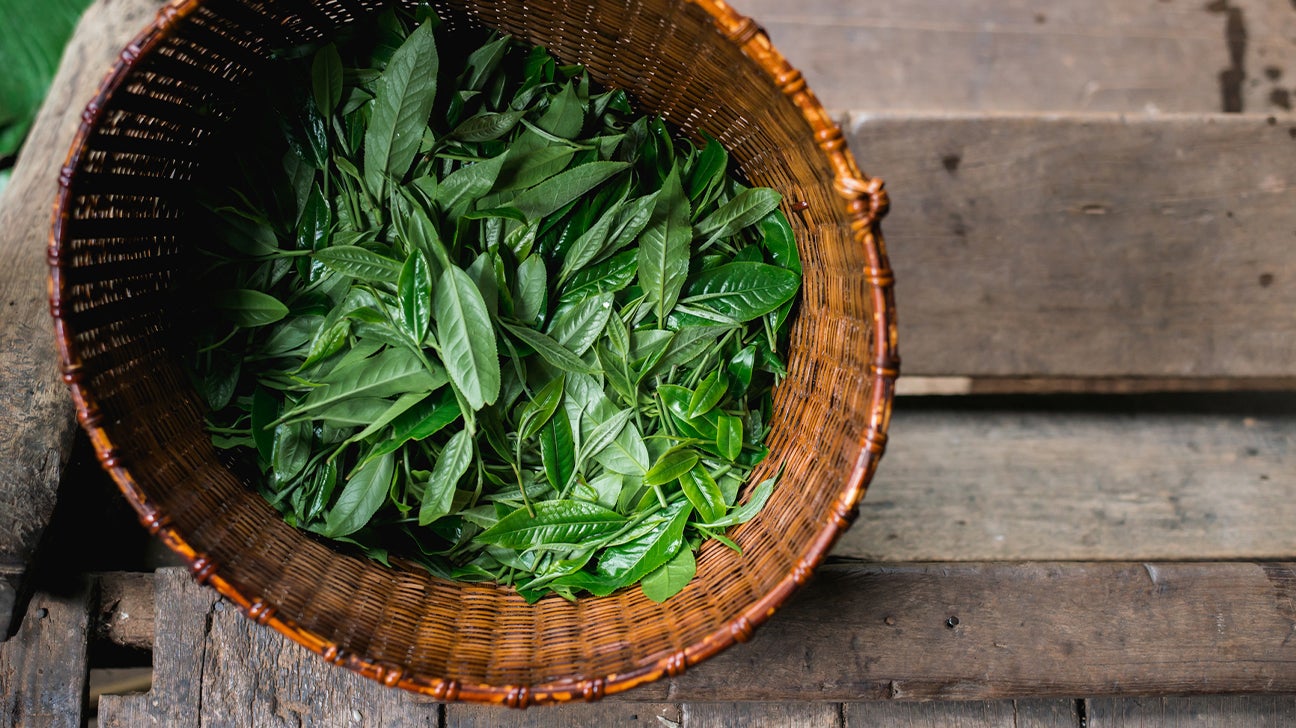Is Darjeeling Tea's Future At Risk?

Table of Contents
The Impact of Climate Change on Darjeeling Tea Production
Climate change poses a severe threat to Darjeeling tea production. The delicate tea bushes, accustomed to specific temperature ranges and rainfall patterns, are increasingly vulnerable to erratic weather conditions. Unpredictable monsoons, rising temperatures, and more frequent extreme weather events disrupt the carefully orchestrated rhythm of tea cultivation.
- Erratic Rainfall: Insufficient or excessive rainfall directly affects the growth and yield of tea bushes, leading to stunted growth or waterlogging and root damage.
- Rising Temperatures: Higher temperatures can stress the tea plants, reducing their productivity and impacting the quality of the leaves. The delicate muscatel flavor, so characteristic of Darjeeling tea, is particularly sensitive to temperature fluctuations.
- Increased Pest and Disease Pressure: Warmer temperatures and altered rainfall patterns create ideal conditions for the proliferation of pests and diseases, requiring increased pesticide use and impacting the organic tea production sector. This not only increases costs but also raises concerns about environmental sustainability.
These changes result in:
- Reduced Harvests: Leading to significant price increases for consumers.
- Loss of Traditional Varieties: Many traditional Darjeeling tea varieties are particularly susceptible to climate change, posing a threat to the unique genetic diversity of the region's tea.
- Increased Costs: Adapting to changing conditions requires significant investment in irrigation systems, pest control, and other climate-resilient agricultural practices.
Socioeconomic Challenges Facing Darjeeling Tea Gardens
Beyond the environmental challenges, the Darjeeling tea industry grapples with complex socioeconomic issues. Labor relations in the tea gardens have long been a source of tension, with low wages and poor working conditions impacting productivity and worker morale.
- Low Wages and Poor Working Conditions: Many tea garden workers struggle to earn a living wage, leading to dissatisfaction and impacting their commitment to their work.
- Attracting and Retaining Skilled Labor: The challenging working conditions and low pay make it difficult to attract and retain skilled workers, contributing to a shortage of expertise within the industry. Young people are often leaving for better opportunities in urban areas.
- Automation Concerns: The increasing adoption of automated machinery in some tea gardens, while boosting efficiency, raises concerns about job displacement for manual laborers.
These factors have resulted in:
- Worker Strikes and Protests: Disrupting production and causing further instability within the industry.
- Brain Drain: The migration of skilled workers to urban centers exacerbates the shortage of expertise in Darjeeling tea gardens.
- Reduced Productivity: Overall output is negatively affected by labor-related issues and the lack of a skilled workforce.
Intense Competition in the Global Tea Market
Darjeeling tea faces stiff competition in the global tea market. The rise of other tea-producing regions, offering cheaper alternatives, and the increasing popularity of mass-produced teas pose significant challenges to maintaining Darjeeling's premium market position.
- Rise of Competing Regions: Tea from countries like Kenya, Sri Lanka, and China, often produced at a significantly lower cost, presents a major challenge to Darjeeling's market share.
- Cheaper Mass-Produced Teas: The appeal of readily available and inexpensive tea bags often overshadows the nuanced flavors and higher cost associated with Darjeeling tea.
- Maintaining Premium Pricing: Justifying Darjeeling's premium price point in a competitive market requires effective marketing and branding strategies that emphasize its unique characteristics and quality.
This competition results in:
- Loss of Market Share: To cheaper alternatives that can undercut Darjeeling tea's price.
- Need for Effective Marketing: Highlighting the superior quality, unique flavor profile, and heritage of Darjeeling tea is crucial to maintain its market position.
- Brand Protection: Combating counterfeit Darjeeling tea is vital for protecting the reputation and integrity of the brand.
Sustainable Practices for a Secure Future of Darjeeling Tea
Securing the future of Darjeeling tea requires a concerted effort to adopt sustainable agricultural practices, improve socio-economic conditions, and strengthen the industry's competitiveness.
- Sustainable Agriculture: Implementing organic farming practices, water conservation techniques, and responsible pest management is crucial for long-term environmental sustainability.
- Fair Trade and Ethical Sourcing: Ensuring fair wages and safe working conditions for tea garden workers, and prioritizing ethical sourcing, are essential for building a more just and sustainable industry.
- Government Support and Policy: Government intervention through supportive policies, research funding, and infrastructure development can play a vital role in fostering a thriving Darjeeling tea industry.
Key strategies include:
- Investing in Research: Developing climate-resilient tea varieties that can withstand changing environmental conditions.
- Diversifying Income Streams: Promoting eco-tourism in the Darjeeling region to generate alternative income sources for local communities.
- Strengthening Brand Protection: Implementing measures to combat counterfeiting and protect the authenticity of Darjeeling tea.
Conclusion: Securing the Future of Darjeeling Tea
The future of Darjeeling tea hangs in the balance. Climate change, socioeconomic challenges, and intense market competition pose significant threats to this iconic beverage. However, by embracing sustainable practices, addressing labor issues, and fostering collaboration among stakeholders, the Darjeeling tea industry can secure its future. The preservation of this unique tea requires a collective effort from farmers, producers, government agencies, and consumers alike. Support the future of Darjeeling tea by making informed choices – choose sustainably produced, ethically sourced Darjeeling tea, and help ensure this exquisite brew continues to delight generations to come. Support the future of Darjeeling tea by making informed choices.

Featured Posts
-
 The Australian Election A Key Indicator Of Global Anti Trump Trends
May 05, 2025
The Australian Election A Key Indicator Of Global Anti Trump Trends
May 05, 2025 -
 Ufc 314 Fight Card Official Order Change Announced
May 05, 2025
Ufc 314 Fight Card Official Order Change Announced
May 05, 2025 -
 Analyzing The Grand Theft Auto Vi Trailer A Second Look
May 05, 2025
Analyzing The Grand Theft Auto Vi Trailer A Second Look
May 05, 2025 -
 Holi Heatwave South Bengal Temperatures Reach Near 38 C
May 05, 2025
Holi Heatwave South Bengal Temperatures Reach Near 38 C
May 05, 2025 -
 Showdown Saturday Nhl Playoffs Crucial Games And Standings Impact
May 05, 2025
Showdown Saturday Nhl Playoffs Crucial Games And Standings Impact
May 05, 2025
Latest Posts
-
 Fleetwood Mac A Deep Dive Into Their Chart Topping Legacy
May 05, 2025
Fleetwood Mac A Deep Dive Into Their Chart Topping Legacy
May 05, 2025 -
 The Enduring Popularity Of Fleetwood Macs Top Albums
May 05, 2025
The Enduring Popularity Of Fleetwood Macs Top Albums
May 05, 2025 -
 Exploring Fleetwood Macs Vast And Successful Music Catalog
May 05, 2025
Exploring Fleetwood Macs Vast And Successful Music Catalog
May 05, 2025 -
 The Buckingham Fleetwood Reunion Hope For A Fleetwood Mac Revival
May 05, 2025
The Buckingham Fleetwood Reunion Hope For A Fleetwood Mac Revival
May 05, 2025 -
 Lindsey Buckingham And Mick Fleetwood Reunite After Years Apart
May 05, 2025
Lindsey Buckingham And Mick Fleetwood Reunite After Years Apart
May 05, 2025
